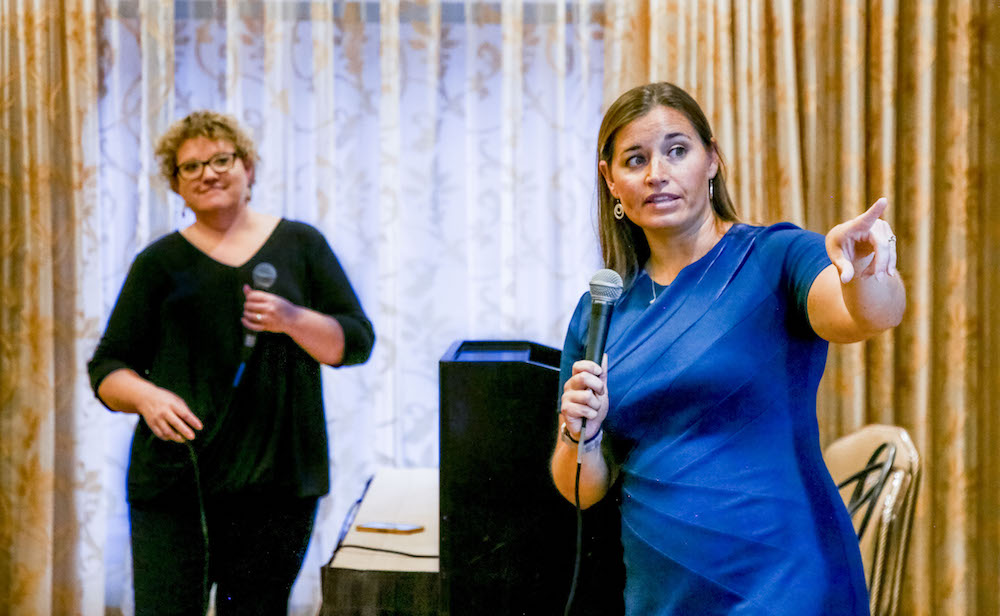Doing journalism in the current climate of mistrust and suspicion can feel like rowing a small boat in an increasingly choppy sea. We’re rowing as hard as we can, just as we were taught, yet still getting tossed around and even overboard. While we row, we might be longing for the good old days of calmer waters, in which journalists (with fully staffed newsrooms) were seen as trusted, authoritative sources of nonpartisan information.
Trust in the news media has been dropping since the late 1970s, and we unfortunately can’t be magically transported back a few decades. But at Trusting News, we’re learning a lot about what we CAN do to calm the stormy sea that is our relationship with the public. We’ve worked with dozens of newsrooms on strategies for building trust, demonstrating credibility and getting credit for their work.
We don’t have all the answers, but we do have a tall lighthouse with a strong beam. Our mission is to be a beacon for newsrooms willing to navigate this territory rather than just hoping the seas calm down on their own. It’s journalists’ responsibility to take ownership over this problem. (If not us, who?)
Our upcoming trainings include a one-day workshop at Poynter in February, where we’ll help participants develop customized plans they can take back to their own newsrooms. Let us arm you with strategies you can put into practice right away.
In the meantime, keep on rowing. As a source of hope and empowerment, here are five things journalists can do to earn trust. Find more in our Trust Tips newsletter.
- Answer questions about your coverage (even when they’re phrased as accusations or misassumptions). Find out what your community doesn’t understand about your work, and clear up their confusion. Jump into comments when possible (to moderate and participate), remembering that if you don’t correct the record when false statements are made about your work, you’re giving the last word to your detractors.
- Explain how you decide what stories to cover. In a typical day, your newsroom probably has several (or even dozens) of potential stories editors could assign, with far fewer reporters available. The process of selecting coverage is routine for most of us but completely mysterious to the public. What makes something newsworthy? How do our choices reflect what our organization thinks is important? Try putting a note at the top of a story, in a newsletter or in a social post explaining what made it worth covering. Add that information into comment threads. Host a Facebook Live conversation about how editors make those decisions.
- If you get something wrong, explain yourself. Too many people do not think journalists care about accuracy, and they sure don’t understand that credible journalists acknowledge and correct errors publicly. If you need to publish a correction, make the most of it by helping people understand that your willingness to draw attention to the error is a sign of your credibility. We want the public to trust news organizations that are willing to do it (which not all are). Help educate them about that. (And if you get something right and other news outlets are wrong, explain that too.)
- Keep opinion journalism and news separated and properly labeled. News consumers are frustrated by blurred lines, and by news that feels like it includes journalists’ opinions. Help solve that problem with clear distinctions and labeling, and by explaining who is writing your opinion content. (Here’s how one of our newsroom partners explained their efforts recently.) And while you’re at it, tell your community how you work to be fair in your news coverage. Don’t assume they know.
- Make the most of face-to-face interactions. We know from a recent Pew study that only 21% of Americans have ever spoken with a journalist. (And those interactions are less likely to have happened with younger, less affluent, less educated, non-white people.) That means each time we interact with someone in the community, it could be that person’s very first time talking to a journalist. Go in prepared, with talking points for anticipated criticism. Create a handout about your newsroom, and point to your ethics policy and contact information.
We know, it’s really hard to make time for things like this (as I wrote about recently). Finding extra hours to focus on learning is tough. But what is the point of journalism if we don’t have a trusted relationship with the people we aim to serve? What good is the work we do if our community doesn’t find it credible?
This is about our ability to survive and thrive. If you agree, let us help get you on a productive path. You and your colleagues can enroll now in our workshop at Poynter for the special low rate of $39, thanks to support from the Knight Foundation. Some travel stipends are also available.
Trusting News, staffed by Joy Mayer and Lynn Walsh, is designed to demystify the issue of trust in journalism. We research how people decide what news is credible, then turn that knowledge into actionable strategies for journalists. We’re funded by the Reynolds Journalism Institute, the American Press Institute, Democracy Fund and the Knight Foundation.







